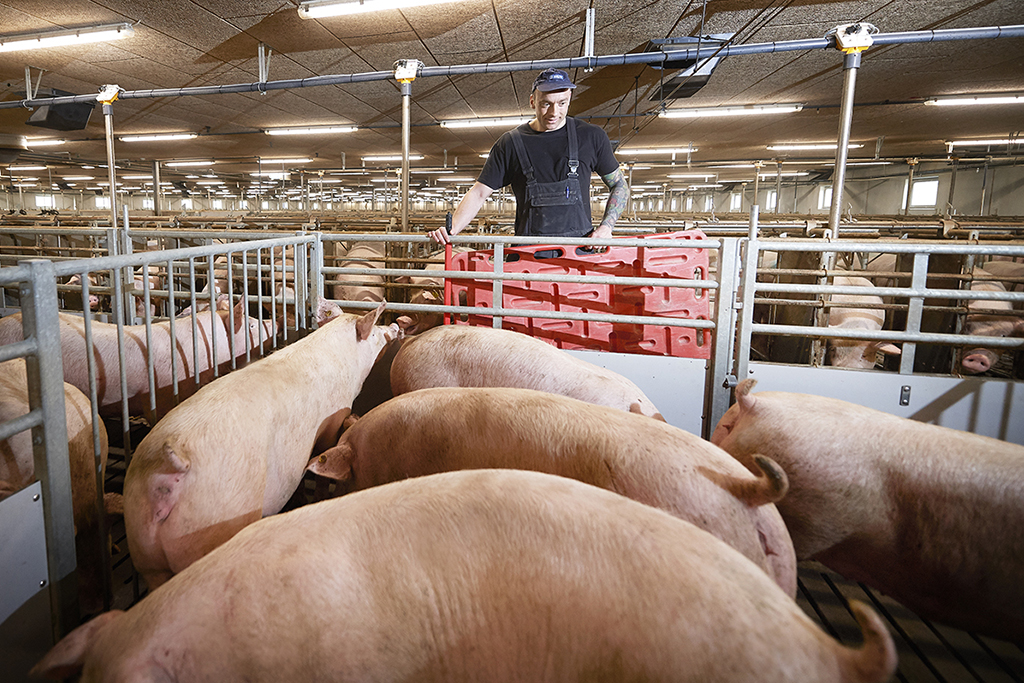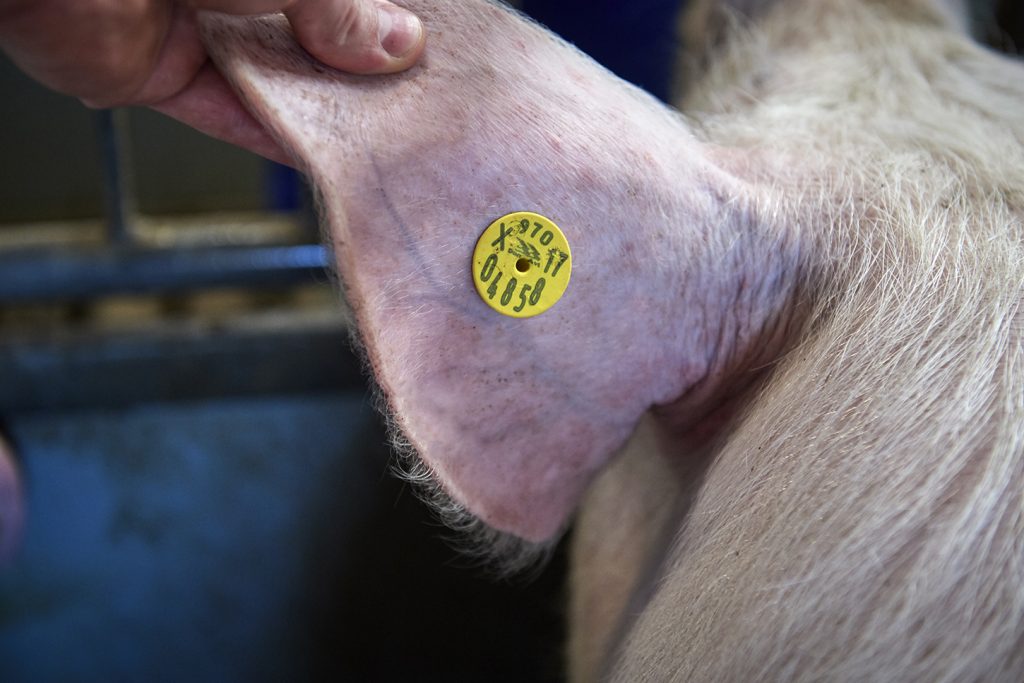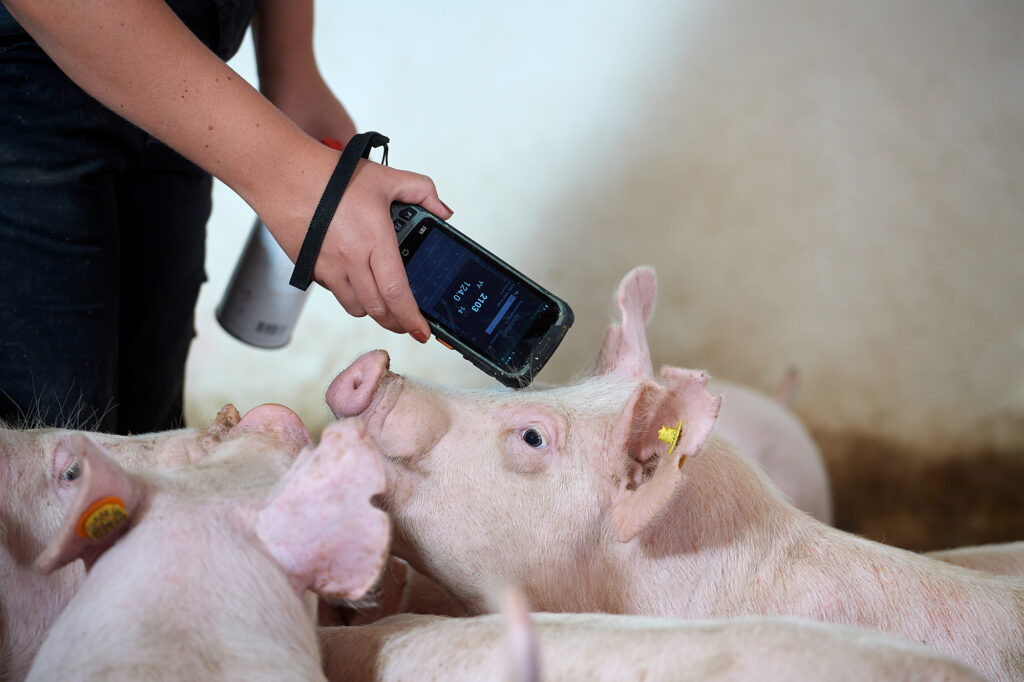Selection and exterior
Selection during the growth period is a crucial factor for lifetime quality and longevity of the gilts which are put to use in the herd. Although the most important selection criteria in a Nucleus Management herd is the index, gilts should undergo a continuous selection based on exterior and body condition. Selction begins in the farrowing unit where gilts with flaws and deficiencies are not selected for breeding.
|
|
|
From a weight of around 60 kg, leg position becomes important to identify. When doing a conformation assessment of the future breeding gilts one of the most important elements is the young female’s lines which include the angle of forelegs, hind legs and the line of the back.
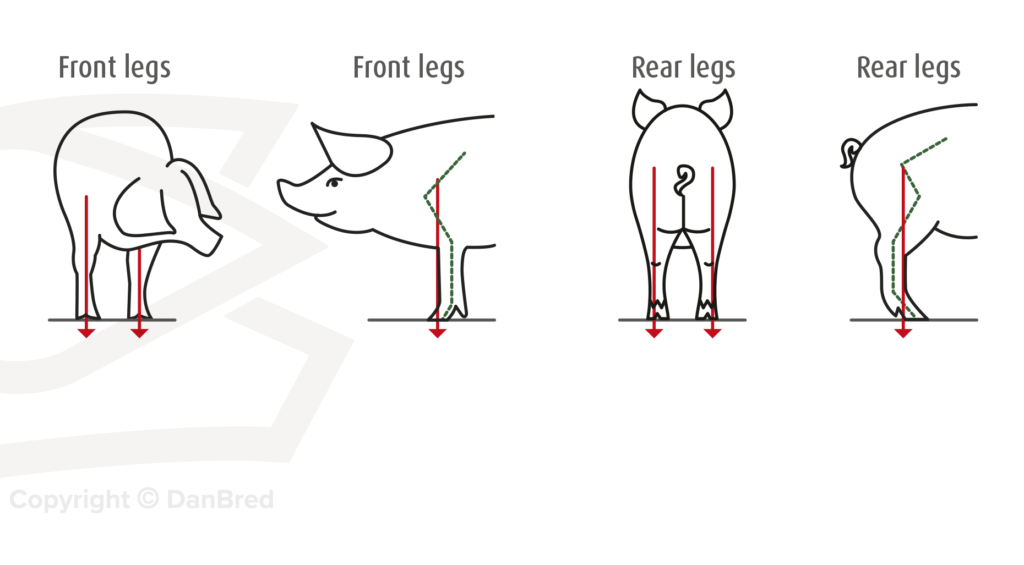
The lines of the gilt combined with the leg position should generally be assessed together with the shape and quality of the hooves, where it is important to focus on selecting for healthy uniform hooves. The best occasion for doing this assessment is when gilts are lying down resting in the pens. This provides an opportunity to thoroughly inspect all parts of the hoof including a check for cracks or heel mutations.
The selection among the breeding gilts continues until first mating is approaching, this is when the final decision is to be made.
Another essential factor in gilts’ upbringing is assessing the growth rate in relation to age. It is important to follow the growth rate ensuring the gilts are on the most optimal growth curve.
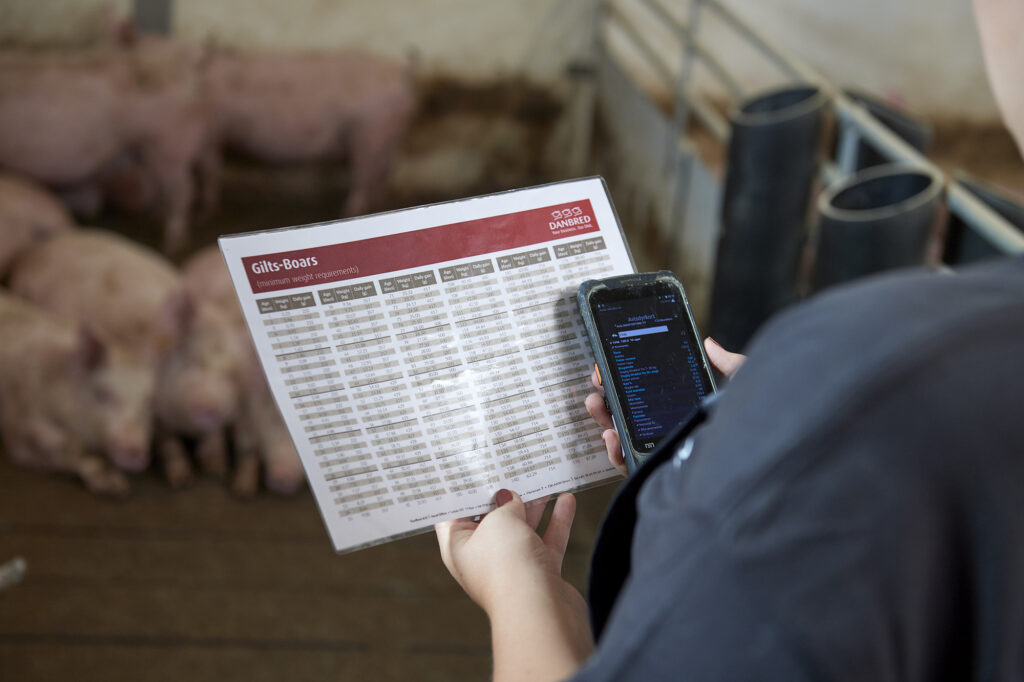
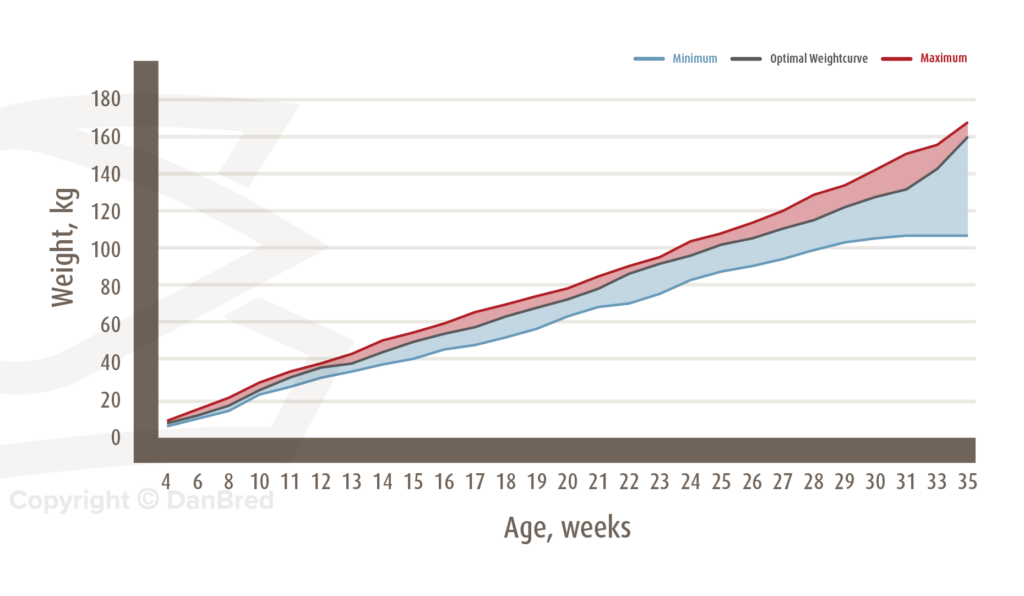
Ensuring appropriate growth according to age and weight will ensure uniformity and general improvement of longevity. Consult your DanBred advisor to find solutions if you encounter any challenges.
Ongoing tasks in the growth period
Housing design and feeding are not the only focal points for gilt growth; daily routines are also essential for gilt development and subsequent longevity.
The daily routines must be organised according to the gilts’ growth rates and should consider the best possible gilt quality, both physically and behaviourally.
- Inspect all animals within the pen – once or more every day.
- Be aware of any signs of illness and diverging behaviour in general.
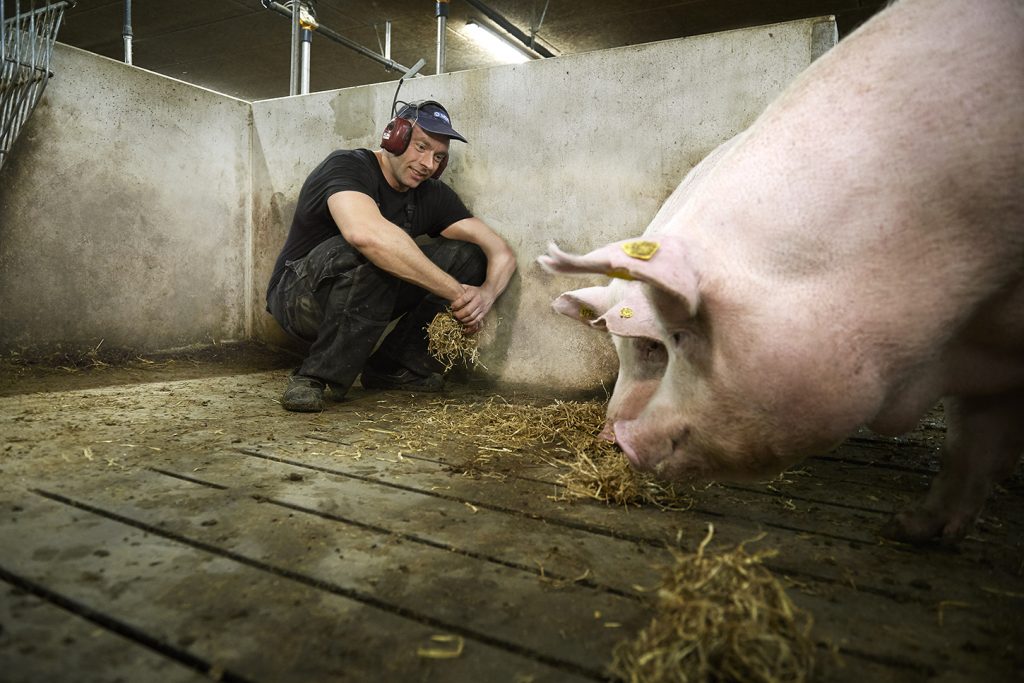
- Clean the pens- solid floors in particular can be slippery and increase risk of splaying.
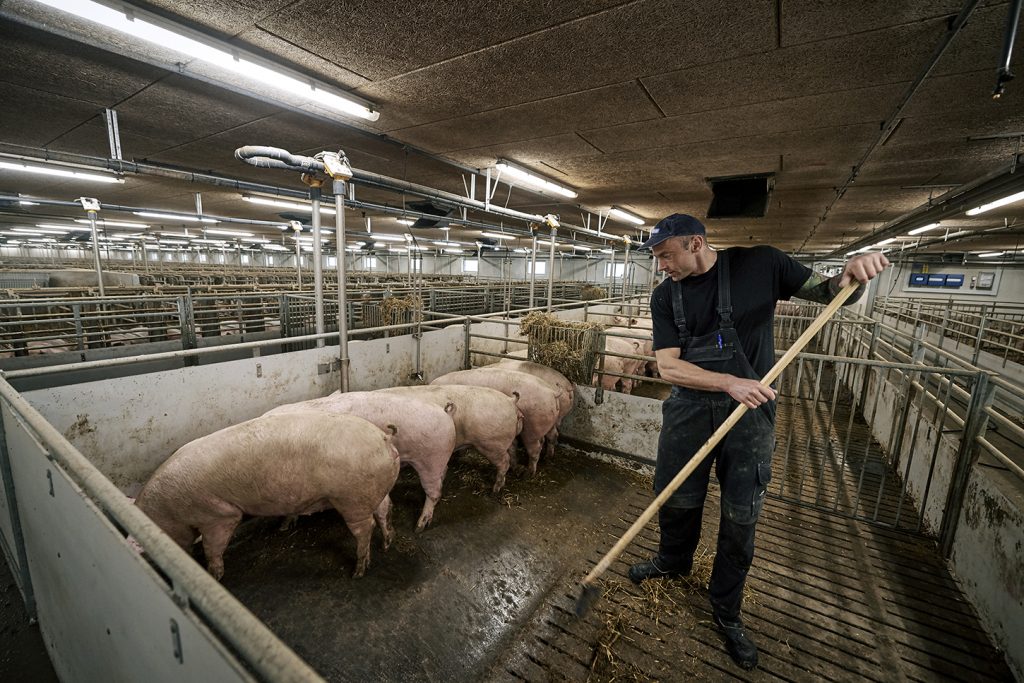
- Do a weekly follow-up on the growth rate of the individual age groups.

All routines and tasks should focus on uniformity. The gilts’ growth and the experiences they have during this period shape their future behaviour and thus the efficiency when they are included in the remaining sow herd.
Socialisation of gilts
Daily contact with gilts should be as calm as possible to ensure positive interaction between employees and gilts wherever possible. All routines throughout the growth period should be focused on behaviour. This means that it is important to implement good routines.
- Minimise fear among gilts.
- Always ensure calm and predictable handling of gilts.
- Establish positive contact, especially for unpleasant routines such as vaccination.
This will shape the behaviour of gilts, ensuring a positive effect on future productivity.
|
|
|
Health and immunisation
Daily routines should prepare gilts for a productive life as a sow. This includes improving gilt immunity and the adaption of immunity to match the health level in the remaining sow herd.
In collaboration with the herd’s veterinarian, a vaccination and immunisation plan should be drawn up for the rearing period and for the sow unit in general. The plan must take the age and health status of the herd into account.
GUIDELINES ON RECOMMENDED VACCINATION PROGRAMME FOR GILTS DURING REARING
The herd veterinarian should always be involved in when making the herd’s vaccination programme.
| Vaccine | 1st vaccination | 2nd vaccination | Revaccination | Comment |
|---|---|---|---|---|
|
Glässer |
12 weeks
15 weeks |
18 weeks |
2 to 3 weeks before each farrowing |
|
|
Porcine Parvo Virus – PPV |
26 weeks |
3 weeks after 1st vaccination |
3 weeks after each farrowing |
|
| PCV2 | 4 weeks | 3 weeks before mating | 2 to 3 weeks before each mating | |
|
Clostridium (and coli) |
6 weeks before first farrowingfaring |
2 weeks before the first farrowing |
2 to 3 weeks before each farrowing |
|
|
Influenza |
26 weeks | 3 weeks after 1st vaccination |
2 to 3 weeks before each farrowing |
Can be administered as a blitz vaccine two or three times a year. |
Aside from a carefully planned vaccination programme, it is important to adapt a procedure with the herd veterinarian on how to ensure gilt’s immunity to match the health level in the remaining sow herd, as this can be a complex affair, especially in a fully sectioned housing system.
Traceability: ensuring individual identification
One of the most crucial matters in gilt production is focusing on individual identification of the breeding animals. Once it is possible to distinguish between the individual gilts, the correct selection is easy.
|
|
|
The newborn gilts should be marked with ear notching, tattooing or plastic-clip ear tags at birth or soon after always before any litter equalisation. No later than at weaning, all gilts should be tagged with an individual ID number which follows them throughout the production until they are culled.
|
|
|
Pen cards
Although all animals are tagged with an individual number, ear tags can sometimes disappear. In this case, it is important to always be able to trace back to the correct ID number for the gilt concerned. One way to do this is by using updated pen boards, registering all gilts in each pen. Naturally, the pen boards must be updated every time an animal exit or enter the pens. This will pay off in the event an ear tag accidentally gets lost.
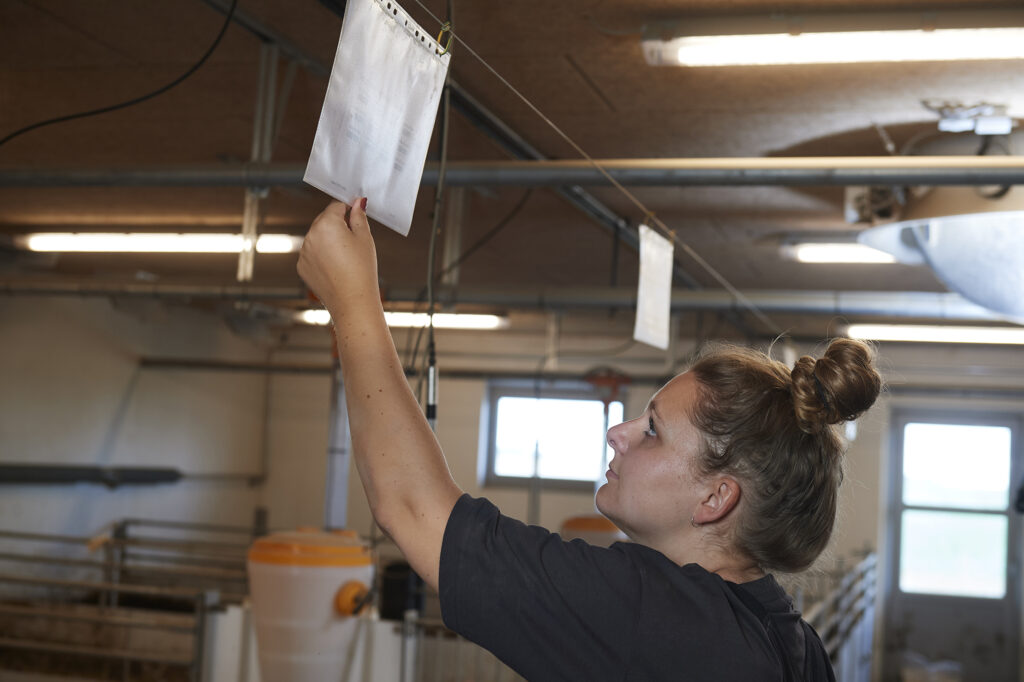 |
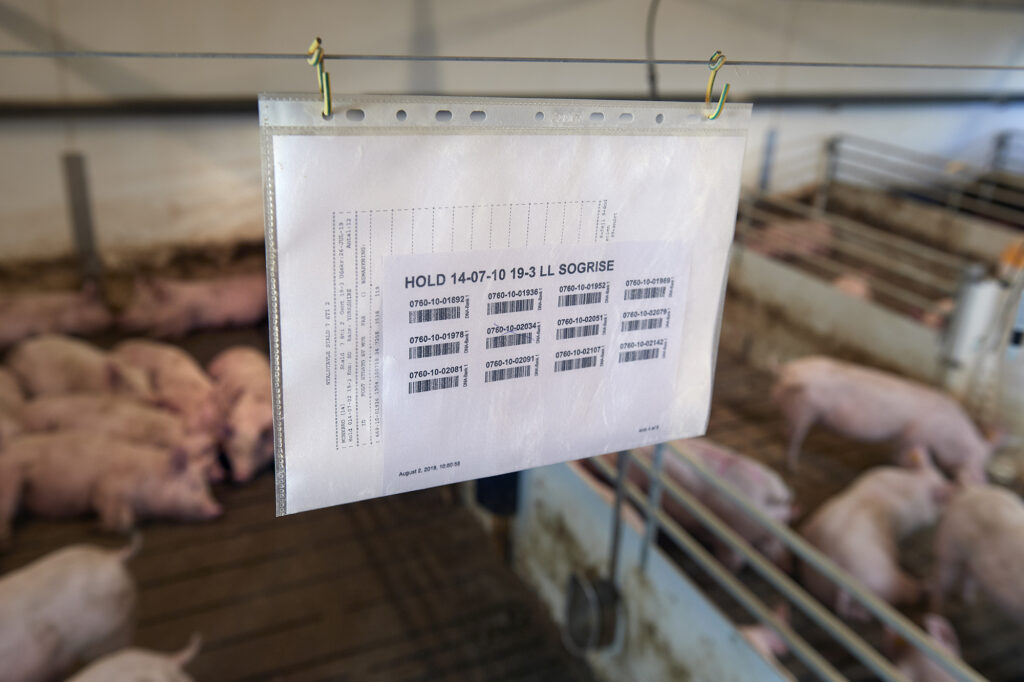 |
If an ear tag is lost the tag should be replaced. Replacement tags can either be handwritten or pre-printed. It is advised to spray mark the tag ID on the back of the gilt until the replacement ear tag is inserted and the full traceability is re-establish.



